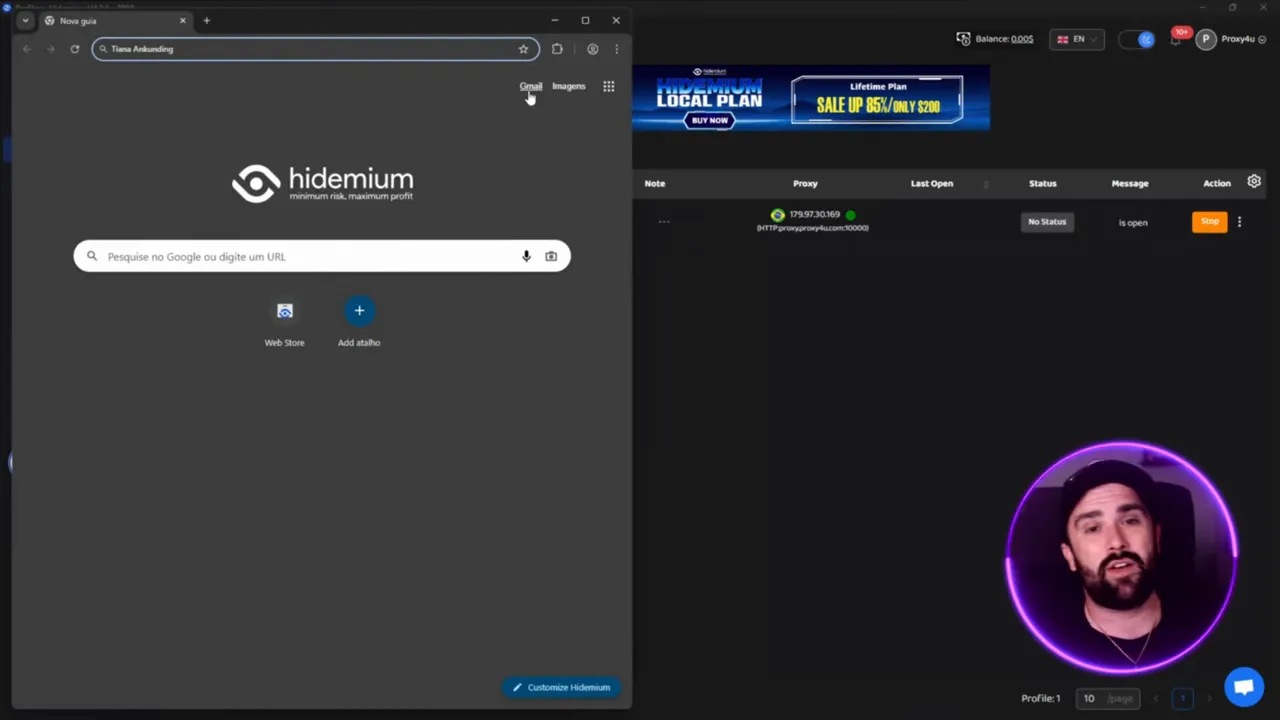hidemium + Proxy4U: The Ultimate Privacy Setup for 2025
I’m Proxy4U, and in this step-by-step guide I’ll walk you through how to combine hidemium with Proxy4U to keep your online activity private, geo-target accurately, and manage multiple accounts safely. The rise of AI-driven tracking makes online privacy essential — and the hidemium + Proxy4U combo is one of the most reliable ways to protect yourself while scaling e-commerce, marketing, and research workflows. For your convenience, you can get started with Proxy4U here: Proxy4U.
Why combine hidemium with a proxy?
Anti-detect browsers like hidemium create isolated environments that mask browser fingerprints, while proxies route your IP through different locations. Together they give you two layers of protection:
- Geolocation control — test or access local content (for instance, Netflix US vs Netflix Spain).
- Account separation — run multiple profiles without cross-contamination.
- Improved anonymity — hidemium handles browser fingerprints while Proxy4U supplies legitimate IPs.
Why Proxy4U? Proxy4U stands out because it offers residential, datacenter, and mobile proxies on a pay-as-you-go model, clean rotation options, and strong review scores — perfect when you need reliable, on-demand IPs for scraping, market research, or managing multiple regional accounts.
Quick overview: what hidemium does
hidemium is an anti-detect browser built to provide secure, multi-profile management on Windows and macOS. It’s designed to keep each profile isolated — separate cookies, fingerprints, and settings — which makes it a top choice for marketers, e-commerce sellers, and analysts who handle multiple accounts.

Why Proxy4U is the proxy of choice
Proxy4U is optimized for flexibility and reliability: residential IP pools, rotation and sticky session options, and a pay-as-you-go billing model so you only pay for what you use. It’s recommended for travel testing, web scraping, analytics, and ad verification. The provider has strong ratings and targets use cases that pair perfectly with hidemium.
Want to try Proxy4U? Grab a trial or test a plan here: Proxy4U.
Step-by-step: Linking Proxy4U with hidemium
1. Choose the right Proxy4U settings
Open your Proxy4U dashboard and select the location type you need — residential, datacenter, or mobile. For local testing choose a residential proxy in the country you want to appear from. Decide whether you want rotating IPs (rotation interval) or a sticky session (I recommend sticky if you want persistent sessions in one country).
2. Copy the proxy line
Proxy4U provides connection strings in this format: username:password@hostname:port. You’ll use each piece of that string in hidemium’s proxy fields.
3. Add a proxy in hidemium
In hidemium go to the Proxy menu and click Add proxy. Choose the proxy type (HTTP or SOCKS — HTTP is fine for most use cases). Then paste the corresponding values into the fields:
- IP address / Hostname → the hostname from Proxy4U
- Port → the numeric port
- Username → digits before the colon
- Password → digits between the colon and the @
After pasting the details, click Check proxy to validate that it resolves to the chosen country and time zone. If the check succeeds, add the proxy. It’s that simple.

4. Create a profile and link the proxy
Create a new profile inside hidemium (choose a target like Google or a blank profile). From the proxy list, use "Quick create" or attach the proxy to the profile directly. Start the profile — hidemium will boot a browser instance using the Proxy4U IP. Verify by visiting a "what is my IP" lookup to confirm the country and IP shown match your Proxy4U selection.
Practical tips and best practices
- Use sticky sessions for login-heavy workflows to reduce re-authentication friction.
- Rotate IPs when scraping large datasets to avoid rate-limits or blocks.
- Keep profile data realistic — language, time zone, and local settings should match the proxy location.
- Test each proxy with hidemium’s check tool before using it on critical accounts.
When to use which proxy type
- Residential — best for genuine browsing and streaming tests.
- Datacenter — cheaper and fast for high-volume scraping (may be blocked more often).
- Mobile — ideal when mobile network IPs are required for verification or ad testing.
Conclusion
Combining hidemium with Proxy4U gives you a robust privacy stack: hidemium isolates browser fingerprints while Proxy4U supplies accurate, geographically-targeted IPs. Whether you’re protecting accounts, testing regional content, or scraping data responsibly, this setup delivers flexibility and security.
If you want to get started quickly, try Proxy4U’s trial from here: Proxy4U. Run a few tests in hidemium, verify your IP and timezone, and then scale safely using sticky or rotating proxies depending on your needs.
Stay safe online, test responsibly, and happy scaling. — Proxy4U



